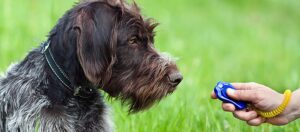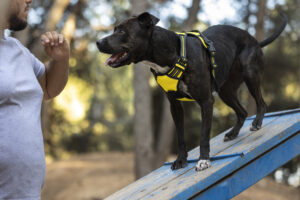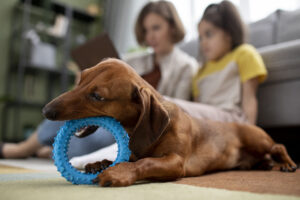When it comes to teaching dogs, using force-free methods is not only kind but also highly effective. Force-free training focuses on positive reinforcement, building trust, and nurturing a strong bond between you and your dog. To get started on this rewarding journey, it’s crucial to have the right equipment at hand. In this article, we’ll explore the essential tools every dog person should have.
- Treat Pouch: Reward-based training heavily relies on positive reinforcement, and food is a primary motivator. A treat pouch https://thetrainerspouch.com/ allows you to conveniently carry and access rewards during training sessions. Look for one that is easily accessible, has compartments for different types of treats, and is durable. A well-stocked treat pouch ensures you can reward your dog promptly and efficiently. Having Food Stations in various points around your house is a great option and means you don’t have to carry a pouch around with you. It also builds anticipation of reward for your dog as you travel together to get their reward.
- Clicker: A clicker is a small handheld device shaped like a matchbox or teardrop, with a thin flexible metal plate inside that makes a ‘click’ sound when pressed. This sound acts as a marker to indicate to your dog that they have performed a desired behaviour correctly. Clickers are valuable tools for timing and precision during training sessions. They enable you to provide immediate feedback to your dog, helping them understand which behaviours are being reinforced. A verbal marker like ‘Good’ or ‘Yes’ serves the same purpose but can vary in pitch and tone, unlike the clicker.

- Harness and Lead: Using a harness instead of a collar is recommended for force-free training. Harnesses distribute pressure more evenly, reducing strain on your dog’s neck and throat. Choose a harness with a front-clip and a clip on the back of the harness. https://www.truelove-uk.co.uk/ This enables you to give your dog different contexts for training and leisure times. A sturdy leash that is six feet or 180cm will allow you to maintain control while providing your dog with a reasonable amount of freedom.

- Food Rewards: High-value rewards are a force-free trainer’s secret weapon. Choose something that your dog finds irresistible, cut into small pieces. About the size of kibble, but not kibble because that’s dinner and your dog gets that anyway! The right choice of food reward will both reward and maintain your dog’s motivation during training. Experiment with different flavours and textures to find what works best for your dog. A piece of kibble might be worth €1 to your dog whereas a piece of chicken might be worth €1000.
- Interactive Toys: Enrichment and mental stimulation are vital for a happy and well-rounded dog. Interactive toys, such as puzzle feeders or treat-dispensing toys, provide mental challenges and entertainment. Incorporating these toys during times where your dog has to amuse themselves or be left alone for a time can help redirect unwanted behaviours and keep your dog engaged during downtime. Ensure the toys are safe, durable, and appropriately sized for your dog to prevent choking hazards. Toys designed for play between human and dog are also essential as they can provide a reward in training for behaviours where food is inappropriate or preferable to your dog. Playing tug with rope toys can be an excellent reward for some behaviours depending on your dog’s preferences. You dog may find activities like fetching a ball rewarding in certain situations. If so, use it as a method of rewarding your dog and reinforcing the behaviour you’d like them to offer.

Reward Based or Force-free dog training relies on building trust, positive reinforcement of the behaviours we want, and mutual understanding. By investing in the right equipment, you set the stage for successful training sessions that will strengthen your bond with your dog.
Remember, patience, consistency, and love are just as important as the tools you use to achieve training success. Happy training!
